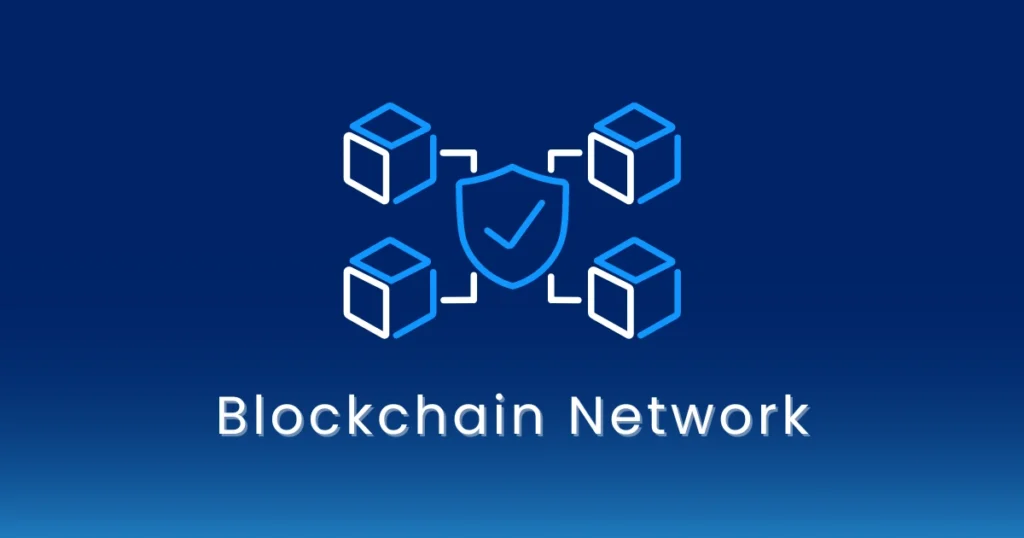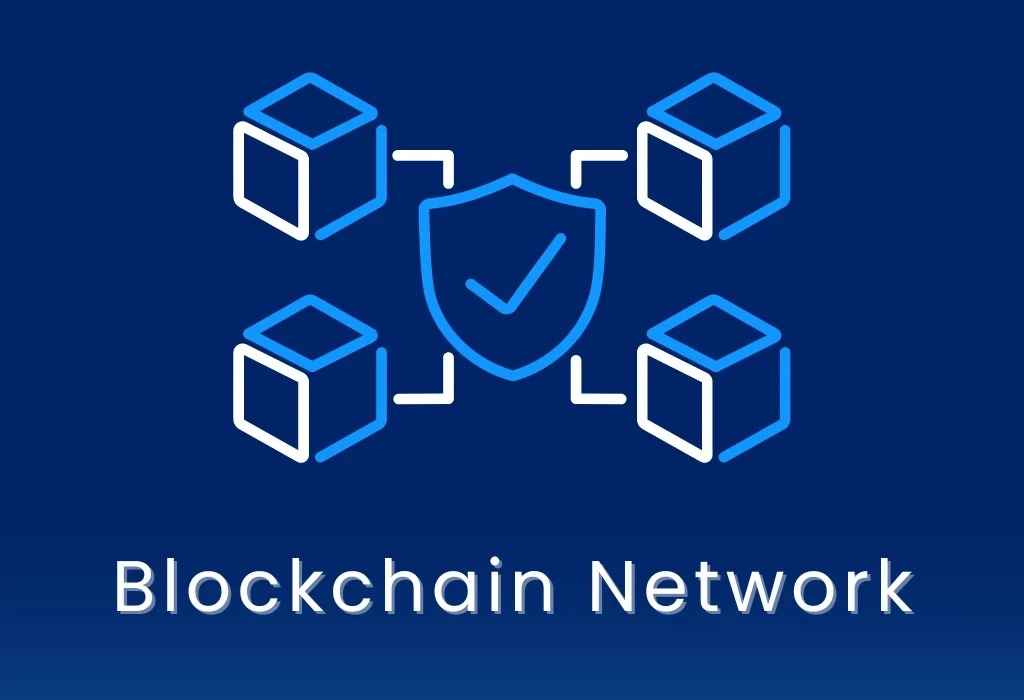
Blockchain Networks: New Trends and Innovations
Over the past few years, blockchain technology has developed quickly. Blockchain originally emerged as the foundation for digital currencies like Bitcoin, but it has since grown into a technology with a wide range of uses in several sectors. However, what makes blockchain networks unique, and what are the most recent developments influencing their future? Let’s examine this technique in more depth.
A blockchain network: what is it?
Fundamentally, a blockchain network bears similarities to an electronic ledger or database. Instead of storing data on one computer, blockchain stores it on multiple computers (nodes) spread across the world. It makes blockchain secure, decentralized, and transparent. No single person or organization controls it. Transactions, data, or information added to the blockchain are permanent and cannot be changed, which makes it trustworthy.
Blockchain Networks: Why Is It Important?
Blockchain networks have transformed information sharing, storage, and verification. Blockchain networks are being utilized in supply chains, voting systems, healthcare, and banking because of their decentralized, transparent, and secure characteristics. The potential of blockchain is being progressively expanded by the most recent developments. Let’s examine a few of these fascinating developments.
Quantum-Resistant Blockchain Networks:
Imagine that a super-powerful computer, called a quantum computer, could easily break the encryption methods that protect today’s blockchain networks. This is not science fiction—quantum computers are real, and they’re advancing fast. Quantum computers can solve complex problems much quicker than regular computers. It could put blockchain technology at significant risk.
Developers are developing blockchain networks that are resistant to quantum turbulence as a solution. These networks employ innovative security methods that are impervious to even quantum computer systems. This way, blockchain technology will remain secure and future-proof.
Blockchain Interoperability 2.0:
Currently, blockchain networks like Bitcoin, Ethereum, and others operate like islands. They don’t easily talk to each other. This makes it hard for users to transfer data or assets from one blockchain to another. But now, developers are working on interoperability solutions to connect different blockchains, allowing them to share data and assets more smoothly.
Interoperability is already being developed by platforms like “Polkadot” and “Cosmos”, but Blockchain Interoperability 2.0 promises even greater flexibility. These advanced solutions aim to create seamless communication across multiple networks, making it easier for users to perform tasks like cross-chain trading or transferring NFTs between platforms.
Decentralized Autonomous Organizations (DAOs) on Layer 2: (Scaling Governance)
A Decentralized Autonomous Organization (DAO) is a type of organization that is run by computer programs rather than people. Decisions in a DAO are made through voting by its members, usually using cryptocurrency. The beauty of a DAO is that it operates without any centralized authority.
However, DAOs face challenges when they grow large, especially in terms of scalability and transaction costs. To solve this, Layer 2 solutions (built on top of blockchain networks) are helping DAOs become more efficient. By using Layer 2, DAOs can scale up without high costs, making decentralized governance more accessible to everyone.
Blockchain and Artificial Intelligence:
Artificial Intelligence (AI) is changing the world, and blockchain networks are starting to integrate with AI to create decentralized, intelligent systems. Imagine a network of smart contracts that automatically adjust based on data provided by AI.
For example, decentralized AI networks can make blockchain-based supply chains more efficient by predicting shortages or delays. Blockchain and AI together can also create intelligent, automated systems in finance, healthcare, and manufacturing. This trend opens up a whole new world of possibilities for self-operating and self-learning systems.
Blockchain Networks for Decentralized Digital Identity: (Protecting Personal Data)
In today’s world, our personal data is stored on centralized servers, making it vulnerable to hacking or misuse. Blockchain networks are creating new ways to manage digital identities, giving individuals control over their own information.
With decentralized digital identity solutions, people can store their personal data (such as IDs, health records, or financial information) securely on a blockchain. They can then choose who to share their data with, and only the necessary information will be revealed. This system ensures better privacy, security, and control over personal data, moving beyond traditional forms of identity management.
Blockchain for ESG Reporting: (Transparent Sustainability)
Environmental, Social, and Governance (ESG) reporting is how companies show they’re acting responsibly towards the environment and society. Blockchain networks can make “ESG reporting” more transparent by allowing companies to store their sustainability efforts on a public ledger for anyone to see.
Customers, investors, and regulators can follow a company’s progress toward its sustainability goals in real-time with this approach. Holding companies responsible for their actions encourages morality and openness in ESG reporting.
Hybrid Blockchains:
A “hybrid blockchain” is a network that combines both public and private blockchains. This allows companies to choose which data they want to keep private (on the private blockchain) and which data to make public (on the public blockchain).
Hybrid blockchains will be the future for businesses. They would provide companies the flexibility and control they desire yet still be able to benefit from blockchains transparency, security properties. These changes make it easier for companies to begin using blockchain, without having the need to share potentially sensitive information publically.
Zero-Knowledge Rollups: (The Future of Blockchain Scalability)
One of the biggest challenges blockchain networks face is scalability. As more people use a blockchain, transaction speeds can slow down, and costs can rise. To solve this, zero-knowledge rollups (ZK-rollups) are being developed.
Blockchain networks can mix multiple transactions into a single one thanks to ZK-rollups, which lowers costs and speeds up the network. Advanced technology is also used by these rollups to verify transactions while keeping personal data secret. Blockchain networks become more private, secure, and scalable as a result.
Blockchain for Healthcare Networks:
Blockchain networks are revolutionizing the healthcare industry by improving data sharing, privacy, and security. But they’re also solving other big problems, such as:
Data interoperability: Doctors and hospitals can securely share patient records across systems.
Real-time updates: Blockchain can provide instant updates on patient conditions, speeding up medical decisions.
Decentralized care: Patients can access their medical records anytime, anywhere, without needing to rely on a single hospital or provider.
Blockchain technology is making healthcare more efficient and patient-centered, going beyond just protecting privacy.
Metachains:
Let’s discuss metachains, a recent development in the field of blockchain technology. A meta chain is a network that can manage multiple other blockchains, making it a super-network. Numerous present issues with data management, cross-chain connectivity, and scalability can be resolved through this. By establishing this, many present issues with scalability, cross-chain interoperability, and data management can be fixed.
Metachains allow different blockchain networks to function together, creating a larger, interconnected system. This innovation could be the key to solving many of blockchain’s limitations, leading to a future where blockchain technology can truly reach its full potential.
What is a Permissioned Blockchain Network?
A permission blockchain is a type of blockchain where only authorized participants can join the network and perform certain activities, such as validating transactions or participating in consensus mechanisms. Unlike permissionless blockchains like Bitcoin or Ethereum, where anyone can join without approval, permissioned blockchains require permission from an administrator or governing authority.
In a permissioned network, the participants’ identities are known and verified, which allows for better control, security, and compliance with regulations.
This kind of blockchain is regularly used in businesses and organizations that want to keep privacy and control over who accesses the data.
Key Characteristics of Permissioned Blockchains
- Access Control: Only approved individuals or entities can participate in the network.
- Governance: A central authority or a consortium manages the network.
- Identity Verification: Users must provide identifiable information before joining, ensuring transparency and trust.
- Privacy: The network allows for selective access to information, providing privacy to participants. How Does a Permissioned Blockchain Work?
In a permissioned blockchain, the process of adding new members or validating transactions is regulated by a set of rules or guidelines that the governing body enforces. Here’s how it typically works:
Access and Verification: Potential participants are vetted by an administrator. Once verified, they are given access to the network.
Transaction Validation: Only authorized participants can validate transactions, ensuring that only trusted parties handle sensitive data.
Consensus Mechanism: Permissioned blockchains often use consensus mechanisms like Proof of Authority (POA) or Byzantine Fault Tolerance (BFT), which are more efficient and faster than the Proof of Work (PoW) used in permissionless networks.
Privacy and Security: Since the network is closed, only certain participants have access to specific data, enhancing privacy while maintaining security. Benefits of Permissioned Blockchain Networks
Enhanced Security: Since only approved participants can access the network, the risk of fraudulent activities and cyberattacks is significantly reduced. Identity verification ensures that individuals are who they claim to be, providing an additional layer of security.
Improved Efficiency: Permissioned blockchains are often faster and more efficient than permissionless ones because the number of participants who can validate transactions is limited. This reduces the time and energy needed to reach consensus, allowing for quicker processing times.
Privacy: One of the main advantages of permissioned blockchains is the ability to maintain privacy. In contrast to permissionless networks, where all transactions are visible to everyone, permissioned blockchains allow for the selective sharing of information.
This is mainly beneficial for industries the place data privacy is critical, such as healthcare or banking.
Governance and Control: Organizations using permissioned blockchains have full control over who can participate in the network, which helps in managing the flow of information and ensures that only trusted entities have access.
Conclusion
Blockchain networks are growing and evolving every day. From quantum-resistant encryption to decentralized AI networks, the future of blockchain is filled with exciting possibilities. These trends are not only shaping the world of blockchain but also transforming industries like healthcare, finance, and supply chains.
As we continue to explore new ways to make blockchain faster, more secure, and more efficient, one thing is clear: blockchain technology is here to stay, and its potential is endless. By understanding these new and emerging trends, you can stay ahead of the curve and be part of the exciting future of blockchain networks. Whether you’re new to the world of blockchain or already involved.


